QuestionHello. I am very puzzled on alot of things with my fish tank. It is a 40 gallon tank, and has been set up for approximately 3 months, although previously it has been used and moved several times in the past year. The fish in the tank includes a Albino Chilid, something that resembles a Loricari Catfish, without the wiskers (an algea eater),an a single survivor golfish from the first batch if feeder fish for the Albino bully. My husband has proclaimed that the Albino is an easy fish to care for, I however believe this to be totally untrue. He has the algea eater in a corner hiding constantly, and when he does come out the Albino is biting at him. So my attempt at helping keep the tank cleaner, with an algea eater has failed and I now fear the algea eater is not getting sufficient food intake. The water had gotten so cloudy, and very stinky. I was pretty much forced the revamp the innards of the tank. Unfortuantely not alot of funds, and a lack of a decent pet store in the area. I managed to get new stones for the tank bottom, new air hose and stone, and light bulb for the tank. Its now been three days and the water, which was new and treated with chlor-out, is now starting to cloud and smell. I DAILY rinse out the filter with cold water. I had been told that the cold water reactivates the charcoal in the filters. I limit the amount of food I give them attempting to spare extra food producing bacteria. I am at a loss to what to use to clear the water. I bought some cloud-out, but reading the back of the bottle, I was dissapointed to read it can cause discoloration of my fish and articles in the tank. I am in fear of using a whole lot of chemicles, with my algea eater. I was told alge cleaners will dissolve him. The Albino and Algea eater are rather large, and the gold fish is getting up there in size too. So my tank is stinky, cloudy, and the fish don't get along. I am puzzled as to what to to. Got any advice? Know what kind my algea eater is? And will I ever be unembarassed to have people see my fish tank?
AnswerHi Lori;
My guess is that the fish are too big for the tank and you are cleaning the filter too much. When the filter is over cleaned, the beneficial bacteria that controls the ammonia and nitrites is killed so the tank becomes cloudy from build-up of these toxic wastes. It makes the water smell too. The cold water rinse kills the developing bacteria too. This bacteria needs time to develop so it can do it's job. Don't rinse or clean the filter pads until the tank is no longer cloudy. If they get plugged it is due to a few possibilities; The fish are being overfed, The fish are too big for the tank and make too much waste, the filter is too small for the type of fish you have, or..... all of the above. You can gently rinse the filter pads in a container of tank water if you absolutely must, but try to avoid it and don't rinse them more than once a week. Just get the big stuff off if you have to.
Cichlids and goldfish are deep-bodied messy fish that create a lot of waste for their size. I know there are albino oscars and they get over 12 inches long. Does it look like these?;
http://images.google.com/images?hl=en&lr=&q=albino+oscar&btnG=Search
Oscars are very aggressive and need a 50 gallon tank just for one all by itself. Goldfish get 8 inches or so. The algae eater is probably a plecostomus. They get over 12 inches long as well. Does it look like one of these?;
http://images.google.com/images?sourceid=navclient&ie=UTF-8&q=plecostomus
Bottom line is you've got the potential for some pretty big fish there!
The best way to straighten this out is to get a bigger tank, but since you can't do that right now, try to find another home for the goldfish. He is going to get killed eventually by the cichlid. It will also decrease the waste load in the tank and enable you to get the tank clear easier. Your local fish store would probably take him for you in exchange for a small container of fish food.
The next step is to cut back on how much food you feed to the cichlid. Too much food will only add to the problem. Feed him until you start to see his belly get a little bigger, not until he is full. Cichlids don't really get full, but will stuff themselves until they can't get any more food in their mouth. Feed him once a day or every other day. It is their nature to want to eat all the time. Don't let him make you feel guilty. they are natural born gluttons!
The algae eater feeds at night. Don't worry about him as long as he has a place to hide. If he doesn't have a hiding place, give him a rock or a well-rinsed clay pot to get inside of. If he is the type I think he is, his armored body will protect him from the cichlid. If you think he is thin, drop a one-inch square of raw squash or cucumber into the tank after you shut out the lights at nite. he will suck on that and get enough to eat. Vegetables cause very little waste so it doesn't tend to foul the water like other foods.
To help the tank get clear, remove 25% of the water every day for a few days and replace it with fresh. It is basically starting as a new tank and and the fish will be suffering the effects of toxins. Especially with a full load of fish. The water changes will help with that. You could have the water tested to see how it is going. Take a sample to the fish store to test for the following;
pH, ammonia, nitrite and nitrate.
Get the actual numbers on the test results. Don't let them send you away saying the water is "fine". Many fish store people that do that wouldn't know "fine" aquarium water if it bit 'em on the leg. Sheesh! You need to know for sure. If they don't know what the results mean, let me know what they are and I can tell you what they mean.
Here is my article about new tanks so you will know more about what is going on with your tank trying to balance;
**********
New Tank Syndrome or Break-in Period
So you have a new tank and you filled it up, put the filter together, mounted the heater into place and turned on the lights. You have all the plants and decorations where you want them....
You are ready for fish.
But, your filter is not ready for a full tank of fish yet.
The filter is running and moving the water and cleaning out crud, right? Of course!
But a very important part of your filter is the part you can't see. An aquarium filter removes the larger visible stuff, but it also must remove the dissolved fish waste that turns into ammonia in the water. To do this, special bacteria must grow in the filter system and on the particles of gravel in the bottom of your tank. This process occurs even on a limited scale in little fish bowls that have no filter in them.
This is "New-Tank Syndrome" or the "Break-in Period". The entire process takes 6 to 8 weeks to complete because these "nitrifying" bacteria grow quite slowly.
Start off with only one or two hardy fish (no more than 2 total inches of fish) for every ten gallons of water and don't add more until the 6 to 8 weeks has gone by. Hard to be patient, but it is worth it to keep your fish alive and healthy. As a matter of fact, the bacteria cannot develop without fish in the tank. You can let that tank sit forever without fish in it, but as soon as the first fish goes in the process begins. Avoid changing the filter pads during break-in. This removes the bacterial colonies that are essential to a balanced aquarium. You can rinse the filter pad out in a container of aquarium water. This will preserve most of the bacteria colonies while still allowing your filter to flow freely. Even using bacteria additives and water conditioners when you first set up the tank will not make a tank begin the cycle by itself. If there are no fish to provide food (fish waste) for the bacteria, the beneficial bacteria cultures will die and you will have to start the colonies all over again once fish are added to the tank. Once the tank has completed the initial cycle, you can change the filter pads every 4 weeks or so. But for now, just rinse them.
Feed your new fish VERY lightly. Any excess food will cause additional waste your system cannot afford to have right now. If you see food floating around or lying on the plants and gravel after five minutes, too much food is going into the tank. Cut back a little each time you feed until it is ALL gone 5 minutes after you feed them. Feed them once a day.
During this "break-in period" your tank will become cloudy and milky looking. You may have to tolerate this for the entire break-in period but it is only temporary. Changing 25% of the water three times a week until the break-in period is over helps a great deal. Changing water reduces the ammonia and nitrites that rise while the bacteria continues to multiply. If ammonia and/or nitrites become too high, your fish will become stressed and possibly die. Use a good water conditioner when you replace the water and make sure it is the right temperature to avoid shocking your fish.
When the break-in is over after 6 to 8 weeks and there are no nitrites or ammonia present in the water you can slowly add more fish. Add one or two every week until you reach the desired population. This allows the bacteria to adjust to the new population every time before adding more. Monitor the nitrites and ammonia to be sure they don't come up. If they do, make a 25% water change and check them again. Don't add the next fish until the levels are down again.
The safe maximum population for any size tank is one inch of adult fish for every gallon of water in the tank. Do some research to be sure of the fish you are interested in. Even though they are small when you buy them, you have to base your population calculations on full-sized adult fish. Many hobbyists have up to two inches per gallon but this can be risky. If a water quality issue arises or a disease occurs it will spread fast and furious in an over-populated tank. In any case, 25% water changes every week to two weeks are absolutely essential for the health of your fish.
Following these guidelines will help you get your new tank on the right track.
**********
Followups welcome
At Your Service;
Chris Robbins
Come on over and join us on the freshwater fish forum at About.com to get even more information too;
http://freshaquarium.about.com/od/questionsanswers/a/naavigateforum.htm
My member name is ChrisR62. See You There!

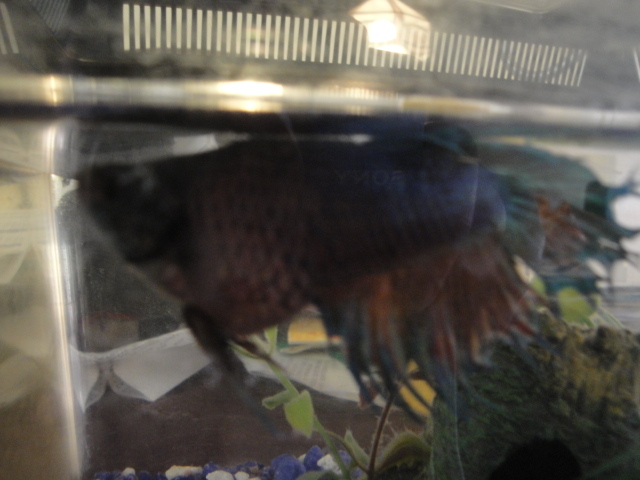 Fish to human infection
Question
Bloated Betta
Im taking care of my friends fis
Fish to human infection
Question
Bloated Betta
Im taking care of my friends fis
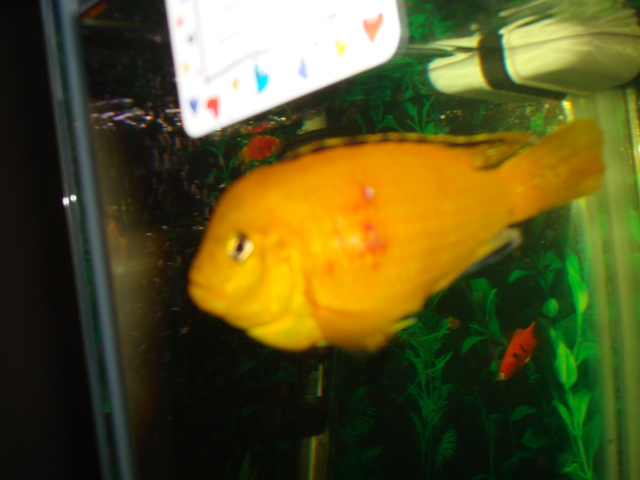 Biggie
Question
biggie
I have had these fish four about 3 year
Biggie
Question
biggie
I have had these fish four about 3 year
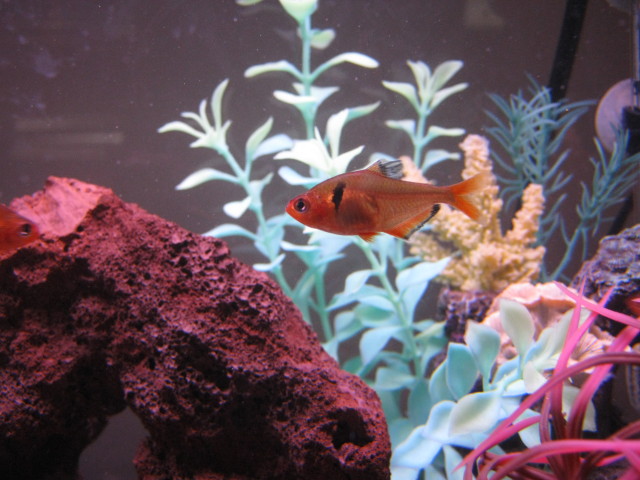 aggression or disease?
Question
tetra fin
Hi, I have a 15 gallon freshwater ta
aggression or disease?
Question
tetra fin
Hi, I have a 15 gallon freshwater ta
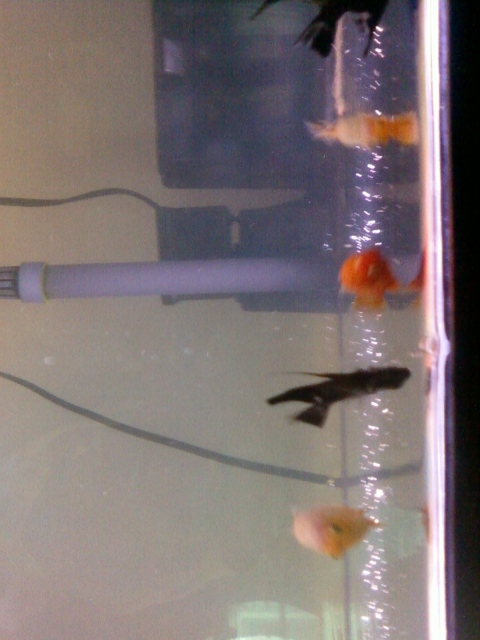 Frustrated Newer tank owner!
Questionmy tank
QUESTION: Hello! Ive had my tank
Frustrated Newer tank owner!
Questionmy tank
QUESTION: Hello! Ive had my tank
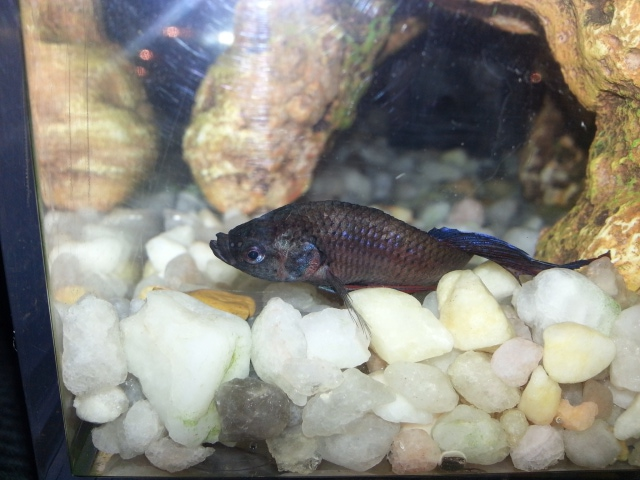 Sick Betta
Question
Image 1 Image 2
My Betta has been
Sick Betta
Question
Image 1 Image 2
My Betta has been